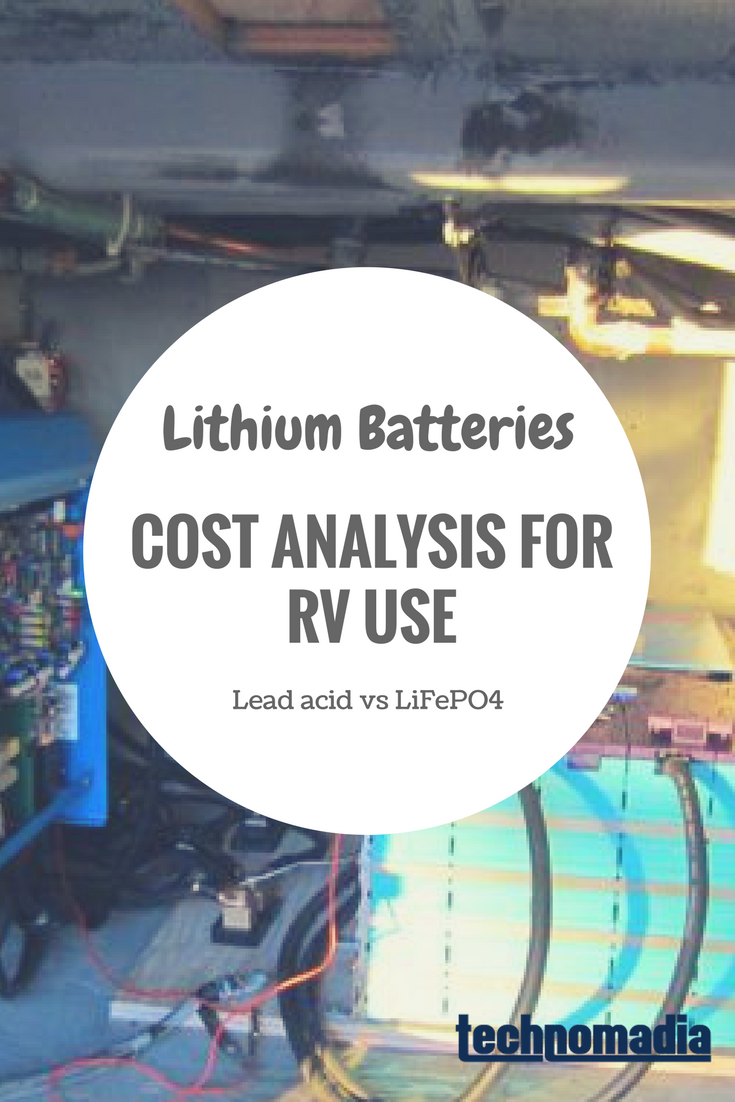
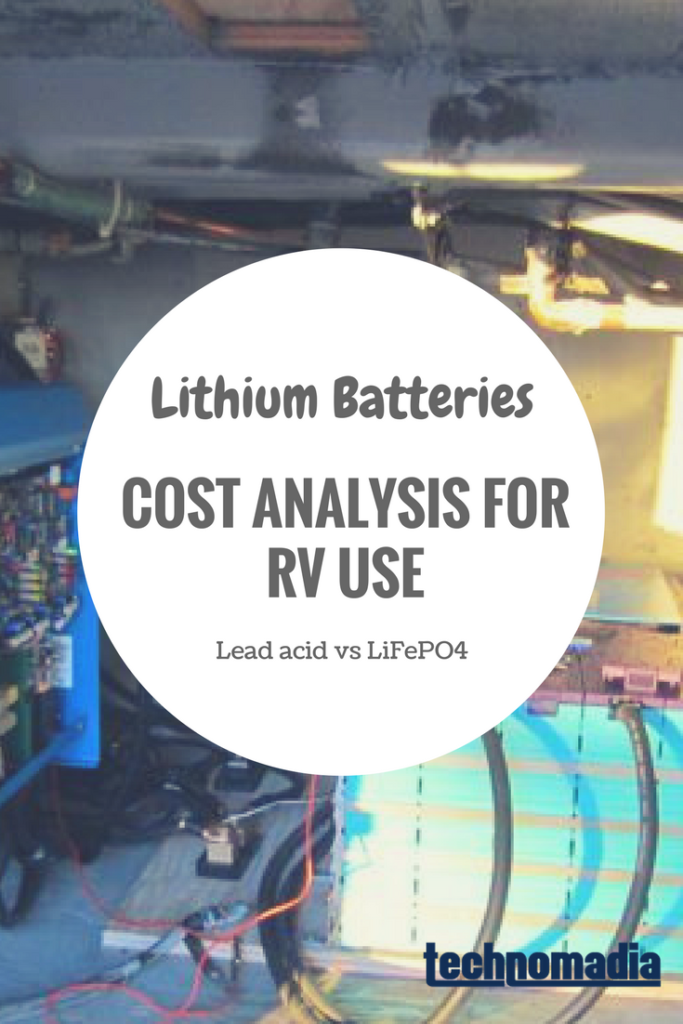 In the first post of this series:
In the first post of this series:
I explained the chief downsides of Lead Acid batteries, the tried and true battery technology that powers essentially every RV electrical system made.
And in part two, I explained about the advantages Lithium Ion batteries, the latest and greatest battery technology to come along.
In particular, I raved about the new hotness on the battery chemistry block – the fabulous and happily non-explosive Lithium Iron Phosphate (aka LiFePO4 or LFP). On paper at least, LFP batteries seem to be ideal for RV house battery use.
Other than the expected “pioneers get arrows in their back” downsides of exploring any emerging new technology, the one chief downside of lithium I pointed out was the cost.
There is just no ignoring that a battery bank made up of quality AGM-style lead acid batteries will cost a lot less upfront than a similarly sized lithium battery bank.
But if you consider the lifetime cost, and the fact that lithium batteries should (theoretically) far outlast even the best high-end AGM’s, the math starts to look compelling.
So lets look at the numbers….
Lead Acid Costs
Lead acid batteries can be had at almost any price – ranging from generic no-name flooded cells on up through list price name brand AGM batteries.
And because lead acid batteries are so common – it is actually possible to find decent-enough (hopefully!) batteries for sale used. We know of people who have gotten essentially unused AGM batteries that were being scrapped from other projects for pennies on the dollar.
But for the sake of comparison, lets take a look at the prices you might find on new 8D-sized AGM batteries, the type that would be considered the prime choice for building a large RV battery bank in a pre-lithium world.
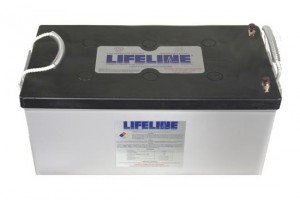 One of the most respected AGM battery makers is Lifeline. The Lifeline 8D AGM battery has a total capacity of 255 amp hours, and weighs 158 lbs. Googling around, I’ve found this battery available ranging from around $660/ea on up to a staggering $966/ea!
One of the most respected AGM battery makers is Lifeline. The Lifeline 8D AGM battery has a total capacity of 255 amp hours, and weighs 158 lbs. Googling around, I’ve found this battery available ranging from around $660/ea on up to a staggering $966/ea!- A similarly specced off-brand 8D AGM costs around $550/ea.
- If you’re really persistent you might be able to find a wholesaler willing to sell direct, and you can end up with name brand 8D AGM batteries for less. Our friends Sean & Louise of Our Odyssey just bought a new battery bank of eight Trojan AGMs and they managed to only pay just $488 per 230 amp hour battery, each weighing in at 167 lbs. (Their post is very worth checking out, as it goes over the math they used to analyze the lifetime costs of their bank.)
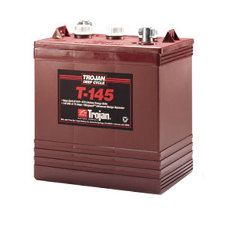 If you are certain that you will be able to keep on top of the maintenance required (and are willing to put up with the other drawbacks), you can save some money by going with quality flooded cells (often referred to as ‘golf cart batteries’), such as 2x Trojan T-145’s which will give you 260 amp hours for around $408 total cost (and 144lbs total weight).
If you are certain that you will be able to keep on top of the maintenance required (and are willing to put up with the other drawbacks), you can save some money by going with quality flooded cells (often referred to as ‘golf cart batteries’), such as 2x Trojan T-145’s which will give you 260 amp hours for around $408 total cost (and 144lbs total weight).
To keep things simple for comparison purposes – we’re going to use a reasonable “good” average price of $2.30 per amp hour (or $460 for 200 amp hours) as our baseline for comparing the cost of lithium vs AGM lead acid batteries.
And keep in mind, when talking about any lead acid battery, you should only consider 50% of the bank to be “usable” power.
Lithium Battery Costs
One of the hardest things about buying lithium batteries for RV use is finding someone actually willing to sell them. A few years ago when I designed the electrical system for our Oliver trailer, I actually fantasized about going lithium, but I couldn’t find a practical supplier at any cost.
You need to keep in mind that with lithium, it is about more than just finding a battery – you also need to design your entire DC electrical system to be lithium compatible. You need to make sure in particular that it is impossible to over charge or overly drain the lithium batteries, which can easily permanently damage them.
To do this, most lithium systems incorporate some sort of EMS (Energy Management System) that can cut off current to/from the batteries when necessary. Some battery suppliers integrate this functionality right into the battery, others sell it as part of a complete system package, and if you are building a system from scratch you will need to procure all the necessary components yourself.
These are a few of the lithium battery providers I tracked down in the course of my research:
Marine & High End Suppliers
There are now a few big name manufacturers bringing lithium battery systems to market primarily targeting the high-end marine market (where cost is no object).
- Valence: Valence sells very advanced lithium iron magnesium phosphate (LiFeMgPO4) battery systems, generally custom built with custom pricing. If you have to ask, you probably can’t afford it. But if you don’t have to ask, this is a good place to start planning the system for your next mega-yacht.
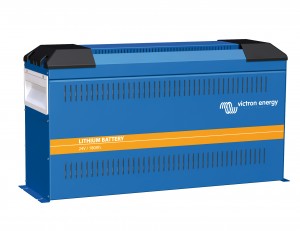 Victron Energy: We were very impressed by the specs of the Victron inverter / chargers (and ended up buying one – we’ll detail why in a later post), so it was really exciting to learn that Victron is bringing a line of LiFePO4 batteries to market. But to date, Victron appears to be only in trials, with no pricing available yet. When the batteries are ready, Victron will be updating their inverter / chargers to communicate directly with the battery EMS system – a very nice feature that sadly does not seem possible as a retrofit.
Victron Energy: We were very impressed by the specs of the Victron inverter / chargers (and ended up buying one – we’ll detail why in a later post), so it was really exciting to learn that Victron is bringing a line of LiFePO4 batteries to market. But to date, Victron appears to be only in trials, with no pricing available yet. When the batteries are ready, Victron will be updating their inverter / chargers to communicate directly with the battery EMS system – a very nice feature that sadly does not seem possible as a retrofit.- GenaSun: GenaSun sells complete lithium systems including battery management circuitry. A 200 amp hour setup (designed with redundancy for the cruising market in mind) currently sells for $5500, and weighs 70lbs. A 360Ah setup sells for $7,700. And keep in mind – “An on-site system inspection by a Genasun technician or representative is required to activate the warranty on batteries and battery management systems.” This isn’t a system for the do-it-yourself type.
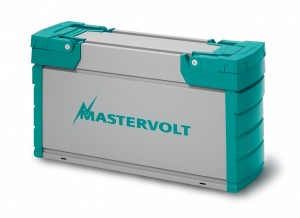 Mastervolt: MasterVolt has been selling lithium battery systems to the marine market for a few years now, and the 12 volt ML 12/320 is appropriate for RV use – delivering a sizable 320 amp hours in a 120lb package that will set you back between $6,600 and $8,360 (the range I found on Google today).
Mastervolt: MasterVolt has been selling lithium battery systems to the marine market for a few years now, and the 12 volt ML 12/320 is appropriate for RV use – delivering a sizable 320 amp hours in a 120lb package that will set you back between $6,600 and $8,360 (the range I found on Google today).
Pre-Built RV Targeted Packages
There are some new companies emerging targeting the RV market with slightly more practical pricing on pre-packaged systems.
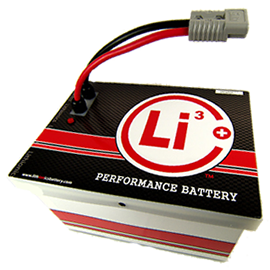 Lithionics: Lithionics offers several lithium batteries specifically targeting the RV market, but they do not currently list any prices. Lithionics was also under evaluation for potential resale by AM Solar, but the Lithionics battery failed under their typical RV use, and AM Solar ended up reporting that: “We have severed ties with Lithionics for several reasons that are very important to us and our business ethics and will not be following up with a second round of tests on the Lithionics batteries.” AM Solar has a well respected reputation in the RV world. Based on their public statement, I was hesitant to pursue a Lithionics system until all the issues have been demonstrably resolved… and I will keep an eye on their progress for our future projects. (Though the Lithionics three year warranty is somewhat reassuring.)
Lithionics: Lithionics offers several lithium batteries specifically targeting the RV market, but they do not currently list any prices. Lithionics was also under evaluation for potential resale by AM Solar, but the Lithionics battery failed under their typical RV use, and AM Solar ended up reporting that: “We have severed ties with Lithionics for several reasons that are very important to us and our business ethics and will not be following up with a second round of tests on the Lithionics batteries.” AM Solar has a well respected reputation in the RV world. Based on their public statement, I was hesitant to pursue a Lithionics system until all the issues have been demonstrably resolved… and I will keep an eye on their progress for our future projects. (Though the Lithionics three year warranty is somewhat reassuring.)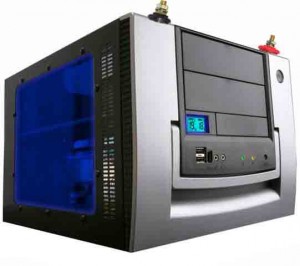 Smart Battery: Smart Battery used to be a distributor for Lithionics, but now they are going it alone designing their own pre-packaged battery systems. I’ve noticed their design go through several iterations over the past few months, but the current pricing listed has a 200 amp hour system for $2,299, and a 400 amp hour system for $3,399. I’ve been in regular contact with Smart Battery, and they seem to understand what it takes to build a reliable battery system. But until they have demonstrated a track record, we consider them unproven but promising. There has been some mention that they might like to send us a sample system to test – and if they do I will certainly share our results.
Smart Battery: Smart Battery used to be a distributor for Lithionics, but now they are going it alone designing their own pre-packaged battery systems. I’ve noticed their design go through several iterations over the past few months, but the current pricing listed has a 200 amp hour system for $2,299, and a 400 amp hour system for $3,399. I’ve been in regular contact with Smart Battery, and they seem to understand what it takes to build a reliable battery system. But until they have demonstrated a track record, we consider them unproven but promising. There has been some mention that they might like to send us a sample system to test – and if they do I will certainly share our results.- AM Solar: As I mentioned above, AM Solar had been evaluating Lithionics but is now pursuing having its own custom made LiFePO4 battery systems made to resell. They have had great success with this model building custom RV-targeted solar systems, so I intend to keep a close eye on their progress. The folks at AM Solar are fully RV focused, and they have a great reputation.
Not everyone is willing or able to build a system from scratch, and thus we think that these pre-packaged battery systems will be the way most RVs will eventually integrate in lithium battery banks.
We are watching this evolving industry closely.
(BTW: One thing about at least two of these battery companies I have noticed that I find tacky is the claim “Made In USA” tacked on to the batteries they are selling. But in truth, the batteries are only assembled in the USA, and as far as I am aware all LiFePO4 battery cells are currently made in China.)
Do It Yourself Wholesale Suppliers
If buying one of the pre-packaged solutions linked above isn’t in your budget or isn’t your cup of tea, there is an opportunity for hands on folks to custom build their own solutions. There are several companies catering to the electric vehicle hobbyist market that wholesale LiFePO4 cells imported from China, and they are willing to sell to anyone who clicks the ‘Buy’ button.
If you go this route beware that you will be treading into rather uncharted waters potentially without a lot of support.
Of course, that is what we chose to do….
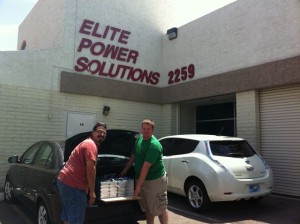 Elite Power Solutions: After getting a lot of our more technical questions answered competently by the helpful techs at Elite Power Solutions, we decided to make a go of building a system around five of Elite’s GBS-LFMP100AH 100 amp hour battery packs. Elite’s price for these packs was $620, making the list price of our battery bank $3100.
Elite Power Solutions: After getting a lot of our more technical questions answered competently by the helpful techs at Elite Power Solutions, we decided to make a go of building a system around five of Elite’s GBS-LFMP100AH 100 amp hour battery packs. Elite’s price for these packs was $620, making the list price of our battery bank $3100.
But to create the 500 amp hour battery bank that we desired, we actually had to disassemble five 100 amp hour 12-volt batteries of four cells each, which we then re-assembled (using a hydraulic press) into 4x 500 amp hour 3.2 volt batteries (with 5 cells each). We then bolted these batteries together in series to make a single 500 amp hour 12.8 volt block… weighing in at just 140 lbs.
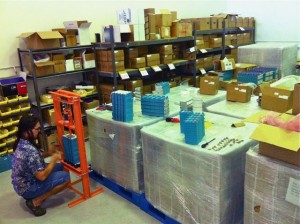 As I said, a process not for the faint of heart, and it took us nearly 8 hours of unscrewing, screwing and pressing. But it was also a heck of a lot of fun to build our own battery bank.
As I said, a process not for the faint of heart, and it took us nearly 8 hours of unscrewing, screwing and pressing. But it was also a heck of a lot of fun to build our own battery bank.
Elite isn’t the only provider of LiFePO4 cells – if you search the electrical vehicle market you will find many other companies selling LiFePO4 cells. We know of one other RV’er planning an even more affordable system using HiPower cells – purchasing 600 amp hours for $2,880 (plus shipping from China).
We honestly didn’t evaluate a ton of the alternative in this space – we went with Elite because they were nearby to where we were at the time (in Phoenix), knowledgeable, had stock on hand, and they were excited to work with us. They even invited us to their facility to use their equipment and coached us on building our bank. This was invaluable to us.
And so far we have been very pleased with the followup support we have gotten.
But… To be clear, if you are not electrically knowledgeable and ready to assemble the components of an EMS (energy management system) from scratch – building your own battery bank from components is probably NOT a good path to pursue!
You might be better off pursuing a more integrated system where the EMS that protects the cells is hidden and integrated inside the battery, or sold as a complete system.
Or… Wait a few more years till all this stuff is cheaper, and mainstream.
The Lifetime Cost Math
 Our goal in building our battery system was a system with at least 400+ usable amp hours, which could run one of our roof air conditioning units full blast for around 2-3 hours before resorting to the generator – perfect for keeping our cat Kiki cool while we leave her behind in the bus to run errands.
Our goal in building our battery system was a system with at least 400+ usable amp hours, which could run one of our roof air conditioning units full blast for around 2-3 hours before resorting to the generator – perfect for keeping our cat Kiki cool while we leave her behind in the bus to run errands.
(When it comes down to it, everything in the end is really all about the cat…)
To get that capacity we needed roughly 800 amp hours of AGM (at 50% usable), or 500 amp hours of lithium (at 80% usable). If we take the numbers above for simplicity sake (it’s difficult to directly compare them, as the packaged batteries come in different sizes), the upfront costs we were comparing were:
- 800 amp hours of 8D AGM – $1840
- 500 amp hours of lithium – $3100
Things look bad for lithium based on upfront costs.
For those of us full timing and/or anticipating a lot of unplugged time in our RV – this is where the lifetime costs start to look promising.
Laboratory results indicate that we should expect to see 2,000 to 5,000 cycles out of a well cared for LiFePO4 battery bank. In contrast, even the best deep cycle lead acid batteries are typically only good for 500-1000 “deep” cycles.
Cherie and I crafted up a quick spreadsheet that tries to make the comparison as simple as possible, summarized:
No matter how we played with the numbers, formulas, and assumptions – over time lithium worked out to be at worst break even compared to AGM, and under most scenarios showed the potential to come out way ahead by not needing to replace our batteries every couple of years.
When you then consider the weight savings, and all the other advantages Lithium Ion batteries, suddenly investing more up front in a lithium system seems very worthwhile indeed!
For anyone planning on heavily utilizing their battery banks, or trying to maximize a solar installation, lithium makes particular sense. For those that mostly move from plug to plug, with just a night or two off grid while in transition – the costs probably won’t make sense for a long while.
The rest of the system…
Of course, it takes more than just batteries to build a proper lithium battery system.
Here are all the components of our system, and their cost:
| Elite Power Solution GBS 100Ah Cells | $3100 |
| Elite Power Solutions EMS CPU | $240 |
| Elite Power Solutions EMS-4SB Sense / Balance Boards | $66 |
| Victron MultiPlus 3000VA Inverter / Charger* | $1890 |
| Victron Blue Power Panel & Battery Monitor | $427 |
| Misc EMS Components (fuses, contactors, etc.) | $500+ |
| Battery Cabling | $200+ |
* Victron gear is fabulous, but relatively hard to find in the US market. The best prices (listed above) and availability I found was via Ward’s Marine, but I always encourage shopping around.
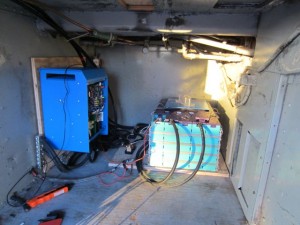
It all adds up fast. We have over $6000 invested in our battery & electrical system … so far. Of course, things like the inverter/charger and battery monitor we would have needed even with a traditional AGM system.
But – off-grid power is not necessarily cheap!!
I’ll go into more details on the features and reasons we selected our inverter, and the details of the battery EMS system we built, in a future post.
The Next Chapter
So now I’ve explained the system we built, and how we justified investing in it.
But how has it been working out so far? In what ways has theory failed to match reality?
Overall we are still just getting started exploring what is possible with our electrical system, and mostly we are loving our lithium battery bank. But even so, there have already been a few hiccups along the road.
But I’ll save those stories for the next chapter…
By the way, we should note — we are not trying to motivate anyone to follow us on this path. We are not selling these batteries, we are not affiliates with any battery dealer, we paid for all our components, and we do not have any financial stake in the technology beyond our own systems. We are simply full time RVing technomads who are designing our own cutting edge home & office on wheels, and are sharing our research & project. Of course we’d love to have more folks out there pioneering and helping us take the arrows in our backs. Right now, we do not consider this technology ready for most, and those contemplating this technology need to be a bit savvy with electrical and battery technology before jumping in.
Other Posts In this Series:
Promise of Lithium #1: Lead Acid Battery Downsides
Promise of Lithium #2: Lithium Ion Battery Advantages
A Year on Lithium (The One Year Follow-Up)


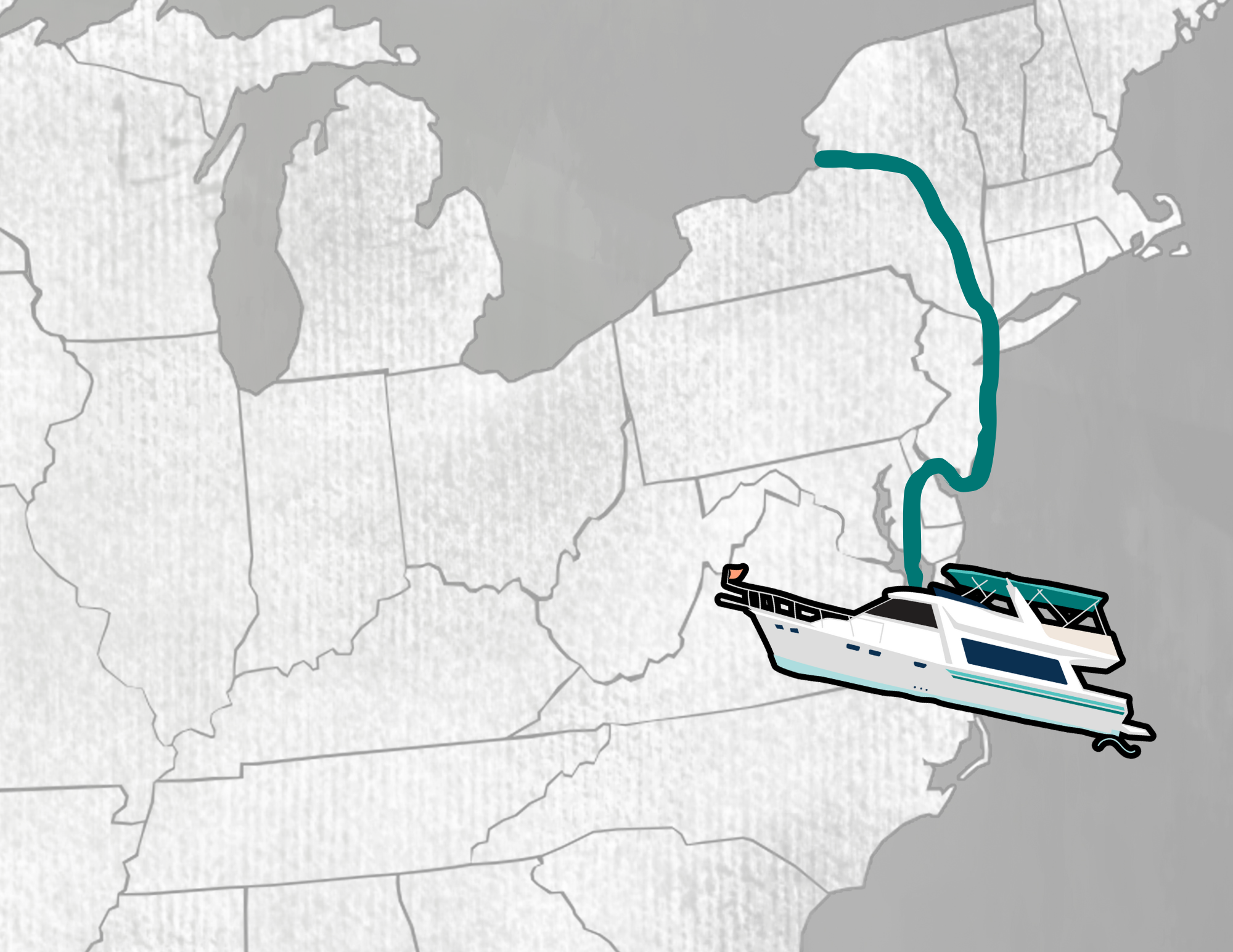
I’ve seen another bus conversion with a 48 volt setup running their inverter most of the time with regular apartment type appliances. Did you consider a higher voltage setup? If not, why? Is there a benefit to a higher voltage setup?
There are definite advantages to going 24v or 48v.. but it requires approaching your entire setup from that vantage point. We were working with existing wiring & appliances on our conversion.
I do see benefits with lithium, mainly getting past the 50% reserve; however, in your comparison you chose the most expensive brands of “other batteries” compared to the lithium- Lifeline and Trojan. Additionally, the cost of a system replacement to incorporate lithium charging- controller and house charging unit. My father, a mechanic for years in generator/charging systems, has steered me clear of some major brand batteries and pointed out the batteries that are well worth the money. Ironically, they are actually found more cheaply under other brand names as there are few battery manufacturers. Johnson Controls makes most of the highest performing batteries.
I’ve heard a few good mentions of Johnson Controls, but I’ve also heard plenty of stories of people buying what they thought were “name brand” batteries that turned out to be junk. This is definitely an area where it pays to do your homework and to really check on the warranty and ongoing support policies.
If you are set on buying lead batteries, the best bet for RVers is often going with Costco or Walmart just because of the ease of getting no-hassle nationwide warranty replacements.
But there are so many advantages to lithium, it is hard to personally imagine going back to a big lead battery bank – no matter what the cost.
– Chris
Chris, I’ve followed you for a couple of years. I just upgrade to solar. I tried to go top of the line on the electronics, but with AGM batteries for now. Do you think lithium prices will come down in the next few years?
I hope so – but over the past five years prices seem to have barely budged.
Overall it appears the demand is increasing even faster than the supply, and all the real economies of scale are being taken advantage of by the automotive industry and cheaper lithium cells are not really showing up on the broader market.
Cheers,
– Chris
Hi Chris! I got a great deal on the Freedom 3012 and am not excited to start over when I haven’t completed this one. That said and looking forward it would seem that the battery monitoring and future solar charging would go together quite nicely. The inverter/charger and auto gen start go together and after I have the more techie interfaces from the battery and solar monitoring it may be possible to sell the Freedom SW and move to a more integrated system. Does that make sense as a technology break point? I ran another cat5 cable today to future the battery monitor
I’ve been looking at this site and a few others and have joined your rvmobileinternet.com. I was looking for an integrated solution and stumbled across amsolar who is apparently going in that direction with packages soon for their lithium packages. I circled back and lo and behold there it is on your site! Most of the RV people are going with the Xantrex Freedom or more currently the Magna series. I wish I had seen the more integrated Victron system earlier… I think I would have gone for that. I still might as I have not installed the Xantrex yet. Though I did get a great deal on it at 50% or more off for a unit that was a show demo. The integration of this system seems more advanced. Kicking myself. Do you have any new information on a total system solution and how it performs?
We’ve had Victron for nearly five years now – and continue to be very impressed. And I’ve been one of the official beta-testers for the CCGX display since it came out, and I’ve loved how open to feedback and suggestions from the RV community to make it better Victron has been.
They are actually even working on adding a tank level display feature, which will make it a great all-around RV dashboard.
I consider both Victron and Magnum to be the top choices for RV inverters. Xantrex is a step up from the no-name brands, but I’d personally go out of my way for the extra geeky features.
We first shared our Victron setup with AM Solar years ago, and we encouraged them to start carrying Victron gear. I’m glad that they now are.
Whichever way you go, good luck with it!
Cheers,
– Chris
Since this article was posted in 2011, Hasn’t Lithium Ion batteries come down drastically in price $$ now in 2016?
Surprisingly – the prices of LFP batteries seem to have been remarkably steady. Lead prices have fluctuated quite a bit on the other hand.
But I haven’t tracked price fluctuations closely at all, so perhaps someone else might have better feedback?
– Chris
Hi Chris,
I’ve run similar numbers and ended up with a discrepancy. Based on the “Expected Lifecycle” table in your post #1, I see 1000 usable cycles for 50% discharge (AGM). But in your table “LFP vs AGM Cost/Cycle” here, you have only 500 cycles. Did I miss something in my calculation?
sean
This was explained in the article above:
“Laboratory results indicate that we should expect to see 2,000 to 5,000 cycles out of a well cared for LiFePO4 battery bank. In contrast, even the best deep cycle lead acid batteries are typically only good for 500-1000 ”deep” cycles.”
We took the low end of both for expected life cycles. If we used 1000 for AGM, we’d have used 5000 for LFP.
Chris, I must be missing something, but can you explain why you ” disassemble five 100 amp hour 12-volt batteries of four cells each, which we then re-assembled (using a hydraulic press) into 4x 500 amp hour 3.2 volt batteries (with 5 cells each)” instead of just putting the original (5) 12-volt batteries in parallel, and calling it good? Was it done for electrical or mechanical reasons? Thanks!
Chris fully answered this question in the 1 year update – https://www.technomadia.com/2012/09/a-year-on-lithium-rv-batteries/
Bob
As noted in preavious post, our son Cary wanted to see if he could design a fabricate a system that was nearly 100% autonomous. He seems to have succeeded.
Reed
We are in Guatemala at current time but we flew down and left rig in New Mexico. I will see if I can dig up the photos using the Ipad of my wife and send these in the next week or so. Son Cary has been in business for 22 years and is currently subcontracted for panels and low voltage for a 1.5 megawatt system.
Our system was finished in June and we have been traveling since and have not had to hook into line power or generator since except to exercise and tune the system.
The system is as noted above
1420 W of solar
9.7 kW hours of LFP or 760 amp hours at 12 V
4.0 kW PSW Magnum
Various converters
Battery suite is 16 LFP 3.2 V LFP batteries in series as 4 battery packs fabricated by Manzanite Micro. Each is 4 x 3.2 LFP batteires in series.
The solar panels are ganged in series of 3 panels each so the the voltage to controller is around 90 V to lessen power loss. The downside is of course the problem of shading of panels so we have to be careful where and how to park to avoid shade over most of the day.
We have run the 1.5 kW ac for up to 3.5 hours on battery-solar and have run the ac and mw simultaneously just to se e it could be done. Elaine has operated the mw for an hour on defrost and the solar kept up with the power requirement and we had no noteable battery draining. We have gauges to monitor this.
We ran the forced air heater for 5 straight days with snow on the roof and the LFP batteries were doing well. Finally scrapped off the snow and we were getting 500 W with very sullen overcast. The maximum power we have obtained was around 1150 to 1200 W at maximum insolation in July afternoon.
We are currently in Guatemala for 8 to 10 weeks of Spanish and tourism. We left the rig with our son who designed and fabricated the system. He has 6 years in solar and wind research at NMSU and then 22 years of solar and wind design and fabrication. We totaled our last rig which had 700 W between Vera Cruz and Puebla, Mexico. We plan to return to Yucatan and Belize this next year. We are still negotiating with the insurance on the wreck and they will have to clear things with Mexican customs before we can take vehicles back into Mexico.
Reed and Elaine
That sounds like a great setup Reed. If you have any pictures shared anywhere, I’d love to see them.
Compliment your son on a job well done.
Cheers,
– Chris
Wow! That’s serious solar/battery juice for an RV.
Hmmm..do I see an update on this whole blog post coming in the near future??
It’s been in draft mode for months
Interesting site. Had decided to go with LiFeSO4 but this helped. We will have six x 235 W panels and a 180 amp-hour 48 V LiFeSO4 battery. Batteries and peripherals have been ordered. Our son Cary has been in alternative solar for 22 years (first licensed solar installer in NM) and has the panels. This should permit us to boondock autonomously, which is what we do more than 300 days a year as full-timers. Spent the last three winters on beach in Yucatan.
awesome post. I am rebuilding my 34′ airstream and have been trying to decide on a full electrical system for boondocking. i already have 4, 254 watt each, flexible solar panels. now just looking for the right battery, inverter charging system. really considering the outback flex 1-1 system with a 3500 inverter. would love to know more about a lithium solution for today.
thanks again . Braun
Hi Brian –
I’d love to hear more about your panels – I haven’t seen a 254W flexible panel before.
Solar is likely going to be a project we tackle this summer – I’m looking forward to it.
Cheers!
Oh my goodness, I didn’t notice that this was a cell and not the whole shebang. That makes a huge difference. Well on the upside, less is more in terms of load balancing 4 cells instead of 40.
The dream of a 1000 AH battery system just got a little more affordable:
http://www.ebay.com/itm/Winston-Thunder-Sky-lithium-battery-LiFePO4-1000Ah-/120751485632?pt=US_Rechargeable_Batteries&hash=item1c1d5972c0
That’s what I call a steal at only $1350! Twice your current battery system for a fraction of the price. Who knows about the reliability. But even if the cycles where only half of the specs, it’d be a great deal. I haven’t been able to find cheaper on the inter-tubes. . . .
Hi John –
Good find – I’ve known that there are good prices to be had on eBay, particularly if you are willing / able to buy in bulk and are comfortable dealing with a seller on the other side of the world, not to mention waiting on shipping…
But it isn’t nearly the steal that you think it is – this is a single 1000Ah 3.2V cell for $1,350. It would take 4x of them to make a 1000Ah 12V RV house battery – bringing the cost up to $5,400. That is an improvement over the $6,200 price that 1000Ah would have cost us for that quantity from Elite Power Solution when we bought our cells last year, but it is not a dramatic improvement.
I do like that 1000Ah cells are coming available – that will make building large battery banks easier. Our bank is built up of 100Ah cells at the moment.
Thanks for sharing this link!
– Chris
i am converting a Sprinter van to an rv and your system sounds like exactly what I need. I plan to copycat. Would you change anything?
Ken
Ken –
It is too soon to tell. We are intentionally exploring rather uncharted waters. I’d only follow us if you are comfortable dealing with potential complications and setbacks. But… So far, so good for us!
– Chris
Thanks a ton Chris and Cherie.
I’ll keep you posted on our progress.
Keep on roaming the earth:). What a life.
Bill
I am very impressed with your site and I am now thinking Li might make my dream possible. I see a world where the food trucks have quiet, clean, easy to maintain and comapact battery power sources as opposed to the generators evryone uses now.I want to make a coffee truck with all of the equipment running on battery power with a possible solar trickle charge. This truck would be parked and plugged in most of the time but will need to run for about 8 hrs when not plugged into a 110v outlet for charging. Here is the eqipment list below if that helps.
Volt/ Amps
220/25 Espresso Machine
220/20 Coffee Brewer
110/12 Coffee Grinder
110/9 Espresso Grinder
110/10 Blender
110/5 Fridge
110/1cashRegister Most of this stuff will only run when used and the stuff that runs constantly is the low amp stuff (lights, Cash register, radio,)
110/2 LED Lights
110/4w aterPump With that in mind the AC unit, the espresso machine, and the coffee machine will be running at about half amp capacity most of the time.
110/8 Water Heater
110/2 Radio
110/9 Snowball machine
110/20 Roof AC
I am looking to get 8 hrs of production out of a full charge. I was thinking a 12 volt system with about 8 AGM batteries and a solar trickle consisting of about 10/ 220 panels. It also needs to be able to have an external 110 plug in recharge cord.
Any advice you could lend to a total novice would be very helpful.
GREAT SITE!!!
Thanks-a-Latte
Bill
Hi Bill … that’s a great sounding idea.
I would think the project would be similar to approaching setting up a house RV system. Calculate how much energy you’ll need to get through your 8 hrs unplugged, and size your battery capacity accordingly. When taking your energy measurements, do them yourselves in real world scenarios using something like a Killawatt device, not off the manufacturers specs. Consider how many times a day each device will need to run & for how long, and know the difference between the energy curve for starting up a device versus keeping it running.
As you’re running a business, I’d lean towards scaling your battery bank to more than you think you need. If you’re going AGM, keep in mind that higher discharge rates (ie. running the blender, etc.) will take the capacity down quicker… so be sure to factor that in. That wouldn’t be the case with LiFePO4.
I’d personally design the battery bank to get your full 8+ hours off a full charge, and not rely on solar. Solar is not a guaranteed energy source – a cloudy day, a winter day or parking in even partial shade could shut your business down for the day if your batteries alone can’t handle the full day. Utilize your solar as bonus energy.
I would think this would be a pricey way to approach a food truck. The cost of the battery bank and solar will many times exceed the cost of running a generator, and I can see why that is the standard. It’s hard enough to break even in the food business, let alone invest in cutting edge power technology that most customers won’t even know is there.
Good luck.
BTW – as Cherie said, going (exclusively) solar to power a food truck probably ins’t particularly practical or cost-effective, but it is completely and totally awesome!
If you dive into this, please keep us posted. It sounds like an awesome project! *grin*
– Chris
Why did you have to dismantle the 12v 100ah cell and reasmble them into 3.2v500ah cells?
The EMS (energy management system) is pretty critical to preventing under/over charging of the individual cells, which it needs to monitor each directly. If we had just put them in parallel, then the EMS would not have been able to do its job – as it could not have hooked up to each pack.
So, instead we broke apart the 12v 100 aH packs, and created 4 3.2v 500 aH batteries hooked up in series – that could then be hooked into the EMS individually and monitored. This way we know when one cell is out of balance as well.
I’ve checked out the web page of the place you bought the batteries (from the link on the first part of the series) and have a question:
Were the 200Ah batteries not available then, or was there some other reason you chose the 100Ah ones? (The 200Ah cost more per Ah, but are a later design.)
I’m in the process of upgrading my RV electrical as well, but doing things in a different order and with different compromises. In some ways, mine will wind up even less off-the-shelf than yours.
The main advantage of the 200 aH pack, which was a later generation than what we went with is they can handle an even higher current draw. Which is way beyond what a typical RV house system would need. They’re specifically geared towards to the electric vehicle market, which do benefit from the higher draw rate.
Given the price difference, the 100 aH packs were the right choice for our application (and most RV house battery systems).
For us, it wasn’t a matter of re-doing our electrical system. Our bus conversion didn’t have a house battery system, so it was a priority for us. Would be difficult to be less off-the-self than a bus conversion, as everything about them are completely and totally custom. Even the bus itself was not originally meant to be an RV.
Thanks for your research. As you clearly noted you are note pushing Li batteries just sharing experience and information gathered. To that end it would be nice if wet cells were included in your comparison. In some market sectors at least they represent the real baseline today with AGM considered the exotic alternative (and Li not even in the room of course). Still, using AGM as a baseline was helpful. Thanks again!
Hi Bob —
I did actually include Trojan T-145’s in the article above, they are one of the best wet cell options out there. I also talked about the downsides of wet vs AGM in the other two articles of this series.
Cheers!
– Chris
Just a quick extra comment. I noticed in your spreadsheet that you rated AGMs at 500 cycles, but at the 50% discharge rate (which I think is your model) AGMs run more like 1,000 life-cycles…at least those are the specs for our Lifeline AGMs (http://www.lifelinebatteries.com/manual.pdf, page 36). Don’t know exactly how you’re modelling it, but it does even out the cost/cycle to ~even.
Nina
Hi Nina —
Indeed the Lifeline AGM batteries (one of the best brands out there) are rated to 1,000 50% discharge cycles. But in contrast, the GBS lithium cells we are using have actually been tested to 2,000 100% discharge cycles. At a 50% average discharge, the GBS cells should go well well beyond that.
Based on studying all the charts and data I have found, it seems like at any given discharge point the lithiums tend to have at least 4x the cycle life, if not more.
The range I distilled out for the various batteries as mentioned above was:
“Laboratory results indicate that we should expect to see 2,000 to 5,000 cycles out of a well cared for LiFePO4 battery bank. In contrast, even the best deep cycle lead acid batteries are typically only good for 500-1000 ”deep” cycles.”
This is particularly a factor when you take into account that few people with AGM’s have the discipline (or even a battery monitor!) to avoid ever going below 50%.
For the spreadsheet I went with the most conservative numbers for each type – just to keep it simple. But no matter how you play with the math, over time the numbers look really good for lithium.
– Chris
As Chris explained, we went with the most conservative numbers for both. If we redid the chart showing 1000 cycles for AGM (best case). We’d feel compelled to also show 5000 cycles for LFP.
That would bring the math to:
LFP – .62/cycle
AGM – $1.84/cycle
Which makes LFP nearly 3x more cost effective (instead of only 2.3x as shown above).
We played with the numbers for weeks, and there other formulas to use too (such as Sean calculates by how it costs to store a kwh).
Just a side note to your comment. I’m surprised that few RV-ers have battery monitors, because even on a small, “primitive” boat I found one invaluable. But then maybe that’s because when you are constantly on the edge (boondocking/anchoring) you need the info more than if you have more “cushion” in your system, with shore-power, a generator, etc. (?) Or maybe they have just not been popularized in the RV community (yet) (or previously).
Anyway, I really just wanted to say: Yes, I love battery monitors! Nothing like information so you know what’s going on
(I used the Link 10, but it has long been superseded; the concept is still similar though AFAIK.)
Pen –
I too remain shocked at how many people boondocking lack a real battery monitor, or mistakenly believe that a voltage meter is a worthwhile way to track battery status.
Anyone who hasn’t invested in a battery monitor has no business considering investing in expensive batteries (AGM or Lithium) until they do.
– Chris
Cherie,
I couldn’t reply to your reply above, so I am doing so here.
You said:
“Pen —
The term trickle charge’ is typically used to refer to state of charge after a battery is fully charged. So I believe Chris was responding directly to that terminology.”
Sorry if my usage of “trickle charge” was wrong or confusing. What I was referring to was the typical type of charging one would get from a solar panel or wind- or towed-generator. In other words, it “trickles” in as compared to what you would get from say, a 200-amp alternator. AGM’s have proven to be somewhat “unhappy” with this sort of usage pattern, but it is a pretty common scenario when anchored out on a simple/small sailboat (something like boondocking). And as a sailor I’m very appreciative of your reports on this newer technology.
You said:
“Pen —
If you read his article about the benefits of lithium ion, he already very clearly addressed the advantage lithium has of not needing to be fully charged to maintain their lifespan or health.”
I did read it but perhaps I misunderstood or just need to read it again. When I read Chris’s reply to me above, this stood out to me (emboldening mine) because it’s the “once full” that could make the critical difference to someone living on solar/wind/small alternator (which may not be your use case, I realize). In that scenario there is no “charge them until they are full and THEN start using them.” You are basically always “trickle charging” (in the sense I used the word) and always using power.
If the LI batteries are happy to constantly accept a small charge simultaneously to usage, then they will be fantastic for cruisers.
Chris said:
“As for the trickle charge… As best I can tell, Lithium has no particular issue being trickle charged at around 13.65V once full,/b>. But I haven’t seen any hard data or analysis about the ideal behavior here.
I hope the reasoning behind my question is more clear now; and I apologize if misreading on my part means it was un-necessary to ask.
Pen
As I noted above, Chris was specifically referring to the technical definition of ‘trickle charge’ – which for LFP would be while full at 13.65v. While charging, LFP needs 14. 4-14.6 (we’re still experimenting with the ideal range) – but the amount of current doesn’t matter (lots or little… or as you’re non-technically using, ‘trickle’).
We have used both flooded lead acid and AGM off of solar before, without incident. Obviously, solar will rarely get either up to a full charge as the last 20% is very slow With both, we occasionally completed a full charge via generator or plugging in.. and additionally, with the lead acid an equalization cycle. As lead acid is cheaper to replace, and can be equalized and new water added to reverse some of the damage of discharging when not starting from a full state – they are sometimes seen as the more desirable option for those running off of lower current charging situations. We personally found the AGMs to have enough benefits for our solar use to invest in them when we did our last RV.
We have no datapoints to share on LFP in a solar application… yet. Doing our solar install is a future project for likely early next year. But we truly believe that LFP will be ideal for solar, especially since a full charge is not needed to maintain their health. Whether theory meets reality here, is yet to be determined (as is all of the promise of LFP for us).
Hi Pen –
You said: “AGM’s have proven to be somewhat ”unhappy” with this sort of usage pattern, but it is a pretty common scenario…”
Ah, now I think I understand the issue you were worrying about. As I mentioned in the prior two posts, lead acid batteries start to prematurely age if they are not regularly brought up to a 100% full charge, and since the final 20% is so slow to charge this rarely happens under solar or wind, and only with excessive generator time. This is a substantial downside for a sailor or boondocker.
Lithium’s have two big advantages here – first, the final 20% can charge quickly, taking advantage of all the daylight or wind available. And secondly, the lithiums should not prematurely age no matter whether or not they ever get topped off to 100%.
– Chris
Chris,
You somehow gleaned what I was getting at even though I didn’t do it very elegantly. Thank you! I appreciate your insight.
Many boats do have large alternators, generators, or regular access to shorepower, so they don’t have the same issues (and have better luck with AMGs). But the smaller/simpler boat with a couple of solar panels, maybe a wind generator, and, say, a 25hp (propulsion) engine with a 60-amp alternator…. you hit on exactly what I was getting at, because their battery banks — even if they are never discharged below 60%, still don’t get the same “care and feeding” that the same battery bank gets on the former boats.
I’ll definitely be keeping an eye on the LI batts. Thanks again for taking the time to decipher my comments
We like to say that you can identify the pioneers by the arrows in their chests. Only the chicken ones end up with arrows in their backs, and that sure isn’t you!
Very, very juicy stuff. This is definitely an evolving industry and no doubt will take the lead for RVs at some point. When our AGM’s finally give out we’ll more than likely look at this…it’s just too sexy!
Nina
Lithium Ion/Iron batteries look like they have great potential. Two questions came to mind (and if I have missed the answers I apologize):
1) I know that my Lithium computer battery is very heat sensitive, and it’s recommended that if it HAS to be stored someplace warm that it be left at around half charge. Have the Lithium I(r)on batteries got around this somehow?
2) How do the Lithium I(r)on batteries do with constant trickle charging vs. a (well-regulated) hard/complete charge? Scenario being something like constant use and solar or wind for re-charging (and of course not using them below 75%-50% capacity). AGM’s don’t take super kindly to this, but it’s a fairly common reality on a cruising boat. It would be great if the Lithiums handle this better.
Thanks,
Pen
Ooops, I see my wording in #2 could have been better. I was comparing the “traditional” batteries that you would typically not plan to discharge below 75% – 50%. It sounds like that’s not the case for Lithiums, so that figure should have been elsewhere in the sentence structure.
Pen –
The term ‘trickle charge’ is typically used to refer to state of charge after a battery is fully charged. So I believe Chris was responding directly to that terminology.
If you read his article about the benefits of lithium ion, he already very clearly addressed the advantage lithium has of not needing to be fully charged to maintain their lifespan or health.
Thusly, we consider them an ideal for a basis of solar, generators, wind, etc – cases where achieving a full charge regularly (like lead acid requires) is unlikely. Our next electrical project is solar on our rooftop, and we selected LFP with this in mind.
The marine & cruise market has been playing around with LFP far longer than us RVers have – it makes a lot of sense in that market for sure, for all the reasons you listed.
Hi Pen —
The LiFePO4 batteries are rated to work well up to around 140 degrees. The other temperature concern I have heard is that you should only charge the batteries slowly when below freezing.
As for the trickle charge… As best I can tell, Lithium has no particular issue being trickle charged at around 13.65V once full. But I haven’t seen any hard data or analysis about the ideal behavior here.
– Chris
Thanks, Chris,
The form factor of the batteries would be very attractive in boats, as it’s always hard to find enough “square” real-estate in the right place for a good-sized lead-acid battery bank. Not to mention trim considerations (weight distribution).
It sounds like these may be more heat-resistant than say, a computer battery.
I ran into a boat-tech buddy today and we talked about it briefly. He works on boats that have a more typical-RV-like usage pattern (i.e. plugged in to shore power regularly or with a generator or other high-output alternator), and apparently they have been considering them (but haven’t had just the right job to use them yet).
I’ll be keeping an eye on how they evolve and would definitely give them a look again before buying batteries (which in my use-case would/will be T-105’s if I didn’t go with LI’s).
PS: I just noticed you said that they have no problem being trickle-charged “once full.” I guess I skimmed over that the first time I read it.
That might be an issue for a more “cruisery” (RV-equivalent: Boondocky with no generator) scenario, because the batteries often never get full before you start using them. In other words, although you don’t use them below, say 70%, you also don’t just “zip zip” charge them to full and then start using them. You are often trickle charging them and using them at the same time, and many smaller boats/engines only have say a 70-amp alternator (in addition to solar/wind).
The wet-cell batteries (T-105’s being particularly robust and cost-effective) seem to stand up to that pretty well; the AGM’s not so much. If the LI’s can work with that sort of scenario there will be a lot of “simpler/anchor out/cruiser” type boats very interested in them.
I’m fixing to get my mobile electricity setup together and your write up sure gives me more insight.
Thanks a lot for sharing this valuable info.
Andreas
Hi Chris and Cherie.
I am so glad that we got to meet and spend some time with you guys in TN.
We have a daughter that reminds me very much of you guys. She and her family are making plans to build and “Earthship” home in the mountains of Colorado. I have told them several times that bus conversion electrical power systems are virtually identical to Earthship power systems.
I have sent her a link to your blog so that they can follow your adventure with this this technology. BTW, she has been blogging about her adventures for a year or two, but just now started a blog on the Earthsip at:
dbljdotorg.blogspot.com
Thanks for an awesome write up!
Everytime I read one of these Li articles, I’m already chomping at the bit for the next one.
We’re definitely pulling the trigger on LFP’s — but now you’ve given us more to think about.
You guys are the nerdiest! LOL
Great explanations and breakdown! I’m adding up numbers in my head, and it seems as if you have managed to produce a kick-ass, high-tech, modernized, solar-ready classic bus conversion for about the price of a mid-sized car. Wow!
Awesome post. This really has me thinking. I’m not afraid to ride the bleeding edge if it can save me $$$ in the long run.
Great post, it makes a lot of sense to me to move away from AGM. For our current rig I don’t see spending the money since the rest of the systems wouldn’t support being off the grid for any length of time. If we stay with the lifestyle I definitely see some serious planning to avoid a ridiculous outlay of cash on the next rig.
Thanks for sharing your research!